What is it hypertrichosis?
Hypertrichosis is excessive. hair growth above normal for age, sex and race of an individual, in contrast to hirsutism, which is excessive hair growth in women who follow a man distribution model. Hypertrichosis can develop throughout the body or can be isolated in small patches.
Hypertrichosis can be congenital (present at birth) or acquired (arises later in life).
What causes hypertrichosis?
The cause of hypertrichosis is unknown. Congenital hypertrichosis is believed to be a genetic disorder that is inherited or occurs as a result of a spontaneous mutation. Acquired hypertrichosis lanuginosa sometimes occurs in people who are diagnosed at a later stage with a Cancer somehow This hair growth, also known as evil one down, it is often confined to the face with noticeable long, fine, silky hair on the nose and eyelids, sites that are normally hairless. It is not known why a cancer causes this excessive hair growth.
Generalized acquired hypertrichosis may be associated with:
- Cutaneous porphyria delays
-
Malnutrition, for example, anorexia nervosa
- Malignancy
- Medicine, for example, cyclosporine, phenytoin, androgenic steroids, minoxidil.
Located acquired hypertrichosis may be associated with:
- Increased vascularity
- Repetitive rub or scratch (lichen simplex)
- Plaster application (temporary)
- Repeated application of powerful minoxidil current steroids, iodine, psoralens (topical PUVA)
- Trichomegaly (long eyelashes) can arise from local bimatoprost or systemic erlotinib
Clinical characteristics of congenital hypertrichosis.
Lanuginous congenital hypertrichosis
This is very extrange syndrome with only about 50 cases reported worldwide since the Middle Ages. The condition is characterized by excessive hair growth in a child at birth. Most of the body is covered with lanugo hair, which is fine, smooth, silky, non-pigmented hair that covers the fetus and usually sheds at around 8 months of gestation and is replaced by fine hair and terminal hair of the scalp in preparation for birth. In congenital hypertrichosis, lanugo hair continues to grow and this excessively long fine hair persists throughout life.
Lanuginous congenital hypertrichosis
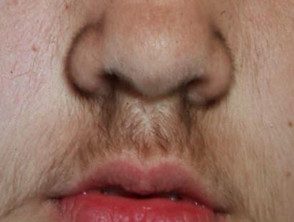
Hypertrichosis
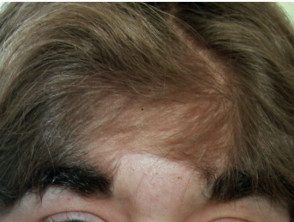
Hypertrichosis
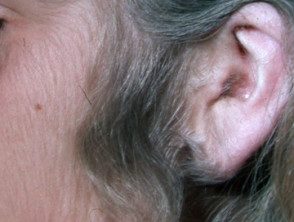
Hypertrichosis
Congenital terminal hypertrichosis
This is a variation of congenital hypertrichosis. This condition involves hair growth throughout the body, but the hair is completely pigmented terminal hair and the condition is almost always associated with gingival hyperplasia (defects in teeth). People with congenital hypertrichosis are often called werewolves, werewolves, and ape men, and in the 19th century, and perhaps even today, they are drawers of people in parallel acts.
Congenital terminal hypertrichosis
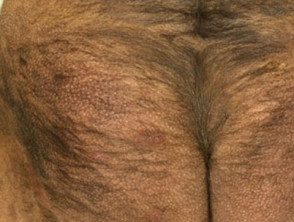
Congenital terminal hypertrichosis
Nevoid hypertrichosis
This is an unusual form of hypertrichosis where a loner circumscribed A terminal area of hair growth occurs. Usually it is not associated with any other disease, except if it arises as a faun's tail in the lower back, when it may indicate underlying spina bifida. Nevoid hypertrichosis can occur at birth or appear later in life. An example of nevoid circumscribed hypertrichosis is the presence of a single, bushy brow.
Nevoid hypertrichosis
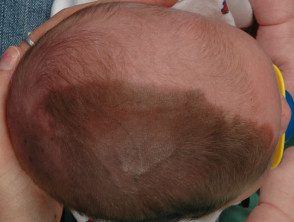
Hypertrichosis
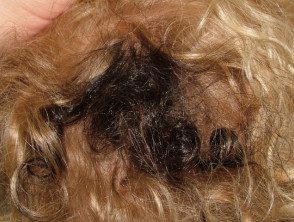
Hypertrichosis
Hypertrichosis associated with another naevi
Hypertrichosis may also be a feature of congenital melanocytic naevi vascular malformation, Becker naevi and less frequently, other birthmarks.
Nevoid hypertrichosis
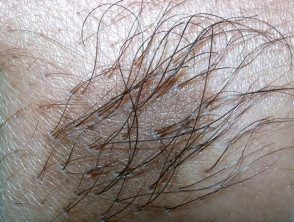
Melanocytic nevus

Melanocytic nevus
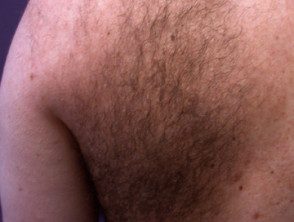
Becker naevus
Clinical characteristics of acquired hypertrichosis.
Acquired hypertrichosi describes the excessive growth of hair that develops in an individual after birth. Hair is generally unpigmented hair or may involve pigmented terminal hair. Excessive hair growth can be localized to a particular area or generalized and cover all areas of the body that support hair.
Drug-induced hypertrichosis

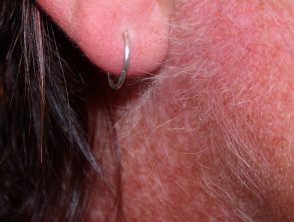
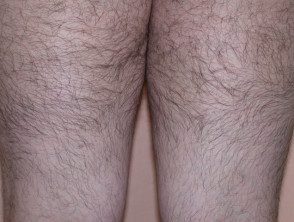
What is the treatment for hypertrichosis?
The treatment of hypertrichosis is basically waxing. There are several methods available, but they should be repeated regularly as the hair continues to grow again. They can also cause scarring, dermatitis or hypersensitivity reactions
- Repeated shaving
- Chemical hair removal
- Electrolysis and thermolysis.
- Hair removal
More recently, To be Hair removal has been proposed as a treatment option. It appears to have fewer side effects and produces a longer lasting result.
